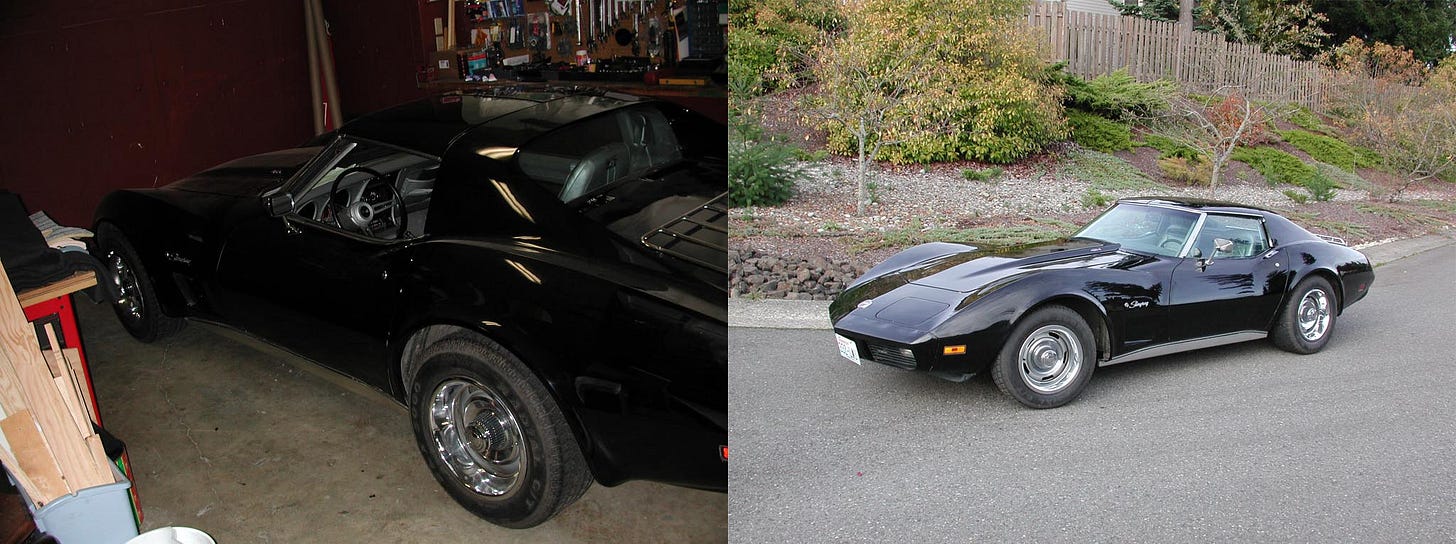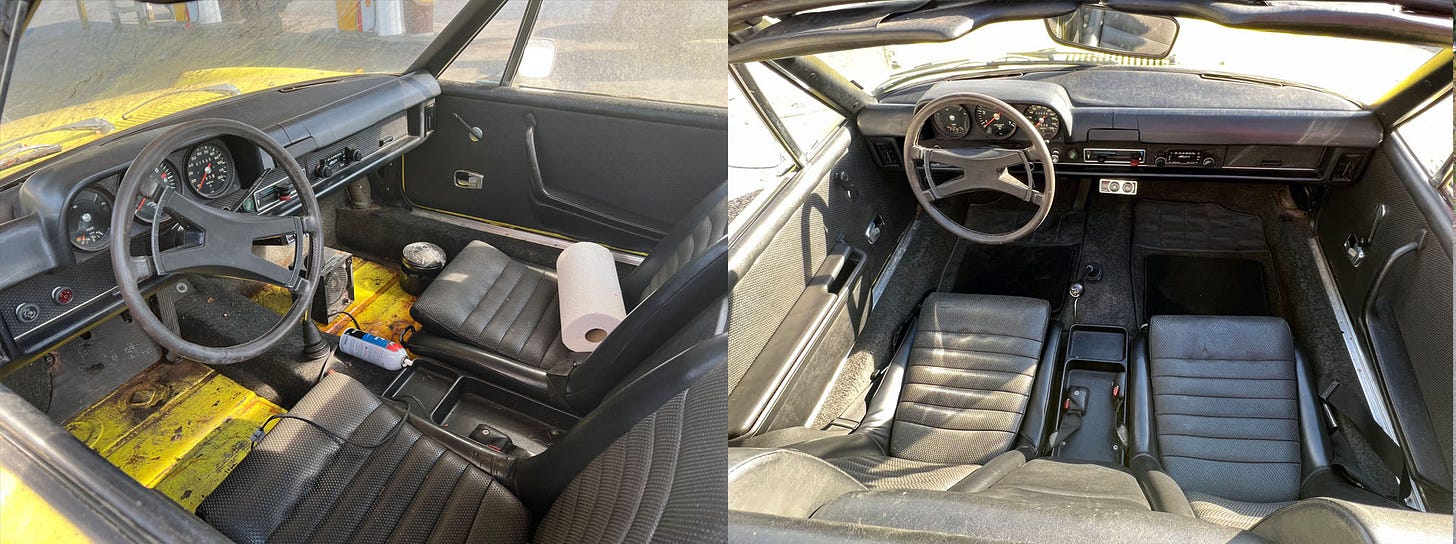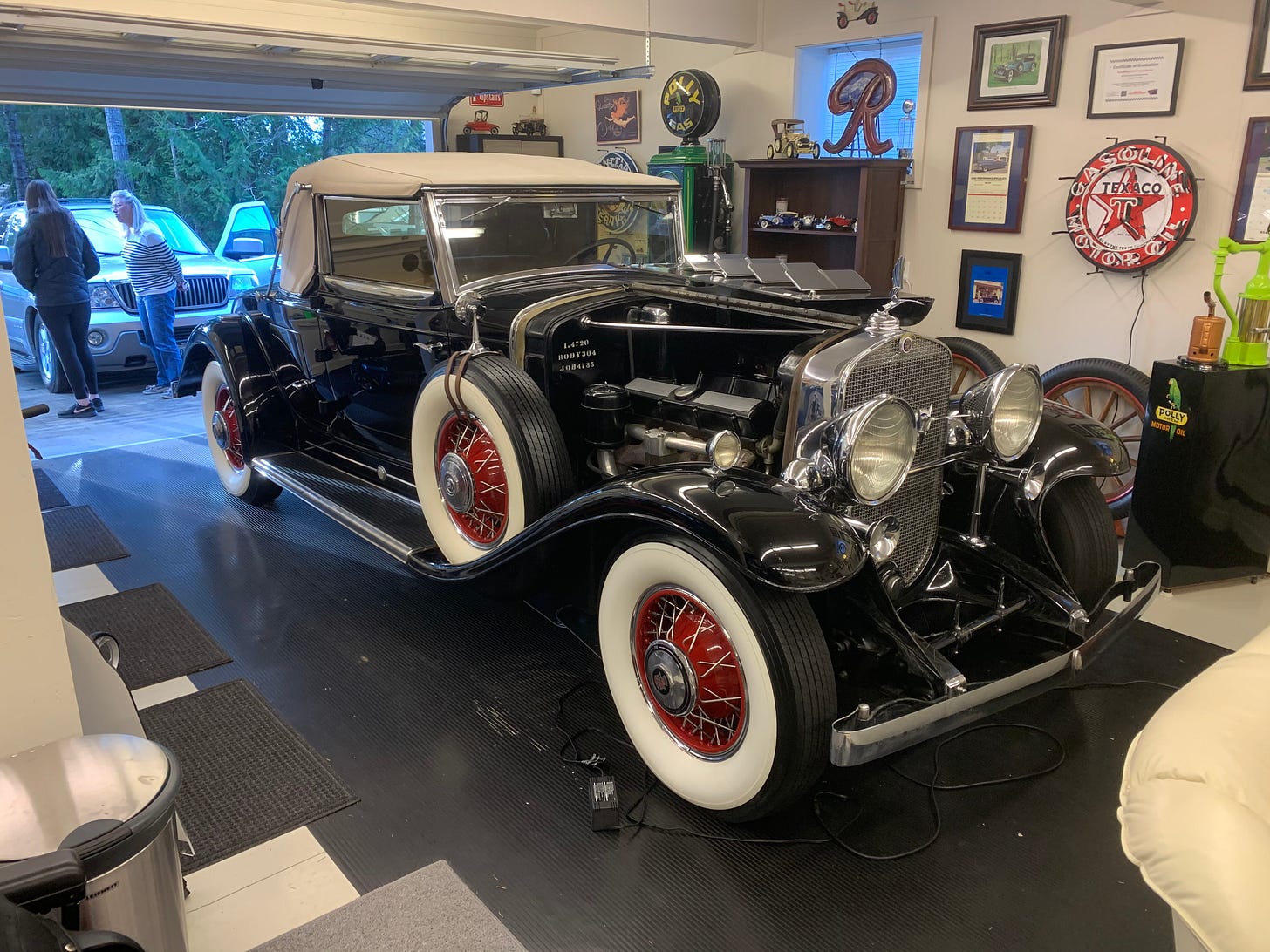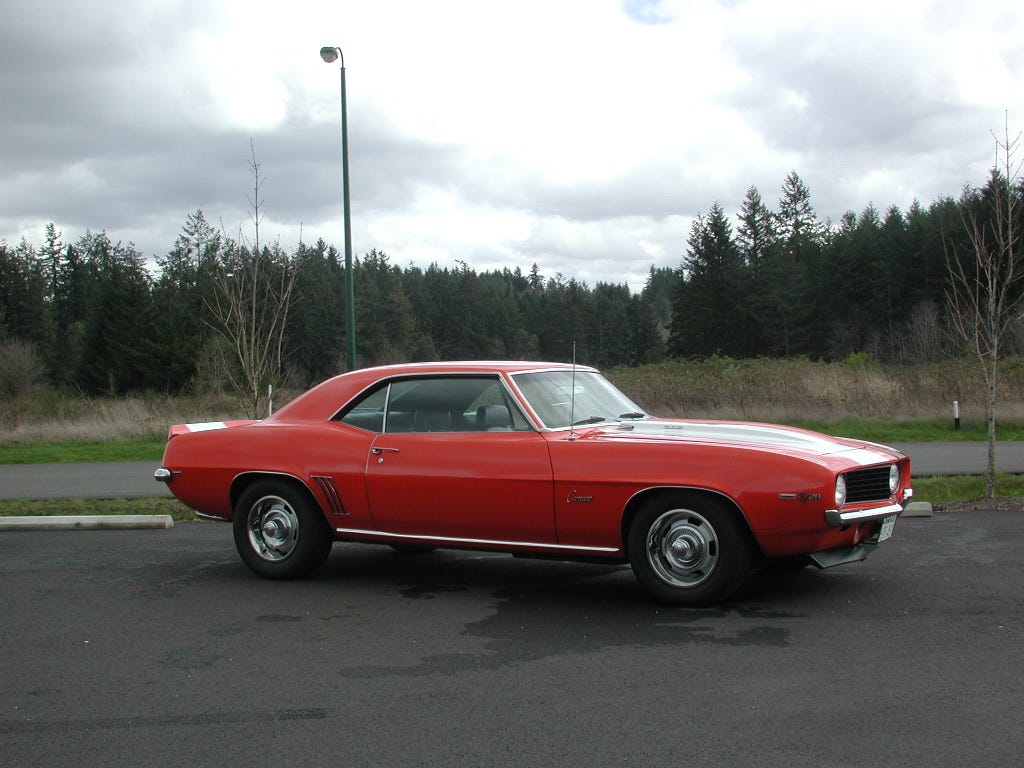The Unintelligence Test & A Step-by-Step Guide to Selling Vehicles Online
Nothing spotlights stupidity quite like an atrocious Craigslist or Facebook Marketplace listing. The Collector Car Guru's pointers help people look smarter.

I constantly remind myself of the irrefutable fact that just slightly under 50 percent of people out in the world are operating with below average intelligence. Remembering this simple truism helps me to not overreact when I am witness to statements or actions of monumental stupidity.
For generations social scientists have tried desperately to devise accurate objective testing methodologies to gauge all individuals’ abilities to understand new material, think critically and act effectively. From the varied uses of the 120-year-old Binet-Simon IQ test to the more modern Wechsler series and even the academic-based SAT, every few years another study emerges discounting the validity of these standardized tests or the value of long-trusted predictors like grade point average or an Ivy League degree upon which academic and hiring gatekeepers heavily rely. Alas, society has yet to find that truly reliable test for applicable intelligence.
Social scientists don’t look at Craigslist and Facebook Marketplace nearly enough. From the standpoint of someone who has spent the last quarter century on a virtual intravenous drip of online listings for used cars, I’ve found advertisements provide an unvarnished and spectacularly accurate view into the mental horsepower of those who craft them. Based on reading hundreds of thousands of used vehicle listings, as well as following up via correspondence and often meeting the sellers in person, I implore experts to consider it is far easier and more accurate to measure lack of intelligence. As Forrest Gump’s Mama knew, “stupid is as stupid does”. And since stupid seems to post enough cars for sale online to have a citizenry-wide demolition derby between the populations of China and India, I propose analysis of cars-for-sale listings as the basis for a new standardized “Comparative Unintelligence Test”.
One would think the average human should understand the basic concept of any for-sale listing is, at the very least, to identify what is being sold, the for-sale item’s condition, the asking price, and a means for a potential buyer to contact the seller. This applies to all things for sale, including guitars, tools, dolls, livestock, real estate and every conceivable type of vehicle. Vehicles are indeed extremely complex products, but the smarter half of the bell curve generally can hit most of the minimum standards. On the other hand, the remaining sellers in the population only often provide more information on which buyers can gauge the seller rather than the vehicle for sale. To that end, the widespread oblivious misuse of language, as well as neglectful omission of words and photos in current active listings of used cars for sale, means the real-world idiocy of many sellers is more evident than Where’s Waldo at a daytime KKK cross burning. I’d be very surprised if the seller whose recent entire Craigslist ad comprised of “Truck, best offer” even walks upright without knuckles dragging.
Given the high-price nature of vehicles, approaching a car sale incorrectly can result in leaving thousands, if not tens of thousands of dollars on the table. And there is no one-size-fits-all way to price, advertise and sell every type of passenger vehicle made over 135 years of production. There are, however, some basic rules, guidelines and best practices to ensure a seller doesn’t look suspect on the unintelligence test.
As a Khan Academy-esque attempt to educate and help those interested in not appearing like Marjorie Taylor Greene giving a keynote address on lasers to the MIT Lincoln Laboratory for Advanced Technologies community, I present to you The Collector Car Guru’s Step-by-Step Guide to Selling Vehicles Online.
BEFORE YOU START: HAVE THE CERTIFICATE OF TITLE IN HAND!
To sell a road-legal vehicle, you must first have in your possession a title in your name. Many states allow a notarized affidavit in lieu of lost title form to suffice, while in Maine vehicles older than 25 years are not required to have a title. For a vehicle in any state, if the title indicates a brand of salvage, rebuilt, theft recovery, ownership in doubt, flood recovery, off-road use only, or similar, you must indicate this in any listing to sell the vehicle, because it not only negatively affects the vehicle’s value, it also means a potential buyer will likely be unable to qualify for a loan to purchase it. You will sign to release interest in the vehicle to complete the sale…and you cannot sign for someone else who is listed on the title unless you provide appropriate paperwork showing you are the executor of that person’s estate or have power of attorney.
STEP 1: PREPARE YOUR VEHICLE
You wouldn’t (or for any Gen Zers out there, you shouldn’t) show up for a job interview or a date without showering and/or still wearing pajamas, so take some time to clean your vehicle inside and out. Both interior and exterior should appear clean, vacuumed and decluttered in photos and in person, and failing to do so indicates neglect to buyers.

Seize the opportunity for quick and free (or nearly free) improvements. Anytime a potential buyer’s eyes are caught by a big blemish, an out-of-place trim panel, falling-off bezel, boot, speaker grill, crumpled floor mat, or anything of this nature translates to a reduction in value or interest. Conversely, paying professionals for costly repair or extensive detailing work before listing rarely translates to a positive return on investment.
STEP 2: TAKE AND UPLOAD MANY PICTURES!
Take pictures outside in daylight with a modern cellphone. The most important shots are front ¾-view, rear ¾ view (showing both sides, hood and trunk), front seats, rear seats and engine bay. It’s also beneficial to take detail shots of the roof, wheel wells, undercarriage, trunk floor or truck bed, door bottoms and other areas so that you can either post or email these to people when they inevitably ask. Listings allow uploading around 20 photos, which is not overkill, especially for pricier vehicles. For all that’s good and holy, make sure your photos are not blurry or obscured by your thumb before uploading them. It is also best practice to ensure the subject of each photo fills most of the frame without being chopped off. Choose the best front ¾-view as the featured first photo for the listing and then group remaining photos logically, so potential buyers can perform a virtual inspection just like they would walking-around in person.
STEP 3: CREATING THE LISTING -- WHAT, SPECIFICALLY, ARE YOU SELLING?
Crazy as it might seem, you need to inform people exactly what you’re offering for sale. There are many essential pieces of information to include in the listing description, much of which can be found on the title, registration, body emblems and/or on data plates located on the driver’s door pillar or on the engine bay near the fender or firewall. Don’t go from memory – if you can’t remember the year your second child was born, chances are you’ve also forgotten critical information about this vehicle you can no longer justify keeping.
Model year – The calendar year in which the vehicle car was purchased new might not be the actual model year. For vehicles with a significant mid-year change important to collectors and enthusiasts (like a 1964.5 Mustang, 1985.5 Porsche 944 or 1986.5 Toyota Supra) it helps to be very specific if the vehicle is pre or post facelift.
Make of the vehicle – Ford, Dodge, Mercedes, Toyota, Hummer, Hupmobile, Porsche, Dort, King Midget… whatever it is, you need to indicate it. Don’t forget to include popular nicknames for search purposes (e.g. a Chevrolet listing should include Chevy and Chevie somewhere in the listing.) For that wildly modified hot rod that remained in your garage after you kicked the cheating bastard out, you might have to look to the registration or title for the actual manufacturer of record.
Model – For something like a Mustang or Accord, the model is usually evident. It can be tricky for some vehicles, however, like in 1936 when Cadillac offered four different series of Fleetwood models corresponding with three available wheelbases. Just like with the make, for search result purposes include in the listing text any popular model nicknames, alternative spellings or model platform generation terms popularly used by enthusiasts. (e.g. Porsche 911’s platform generations of 993, 996, 991 and 997.)
Trim-level sub-designation – Don’t just say it’s a Chevelle when listing a desirable Chevelle Malibu. If it’s a Toyota Avalon indicate if it is an XL, Touring or Limited. This is also the time to indicate if the vehicle is an all-wheel or four-wheel-drive model variant. Higher trim levels generally have higher resale value.
Body style – Don’t make the reader look at photos or guess whether it’s a sedan, coupe, wagon, convertible, crew-cab, long bed, step-side, etc. Specific body style names can get more convoluted than Robert’s Rules of Order. Back to the 1936 Cadillac example, 21 different types of coupes, sedans and convertibles were offered. It was not uncommon in the 1950s to have pillarless hardtops sedans and coupes alongside other 2-door and 4-door “post” versions. The Jaguar XK150 could be had in OTS (roadster) and DHC (convertible), as well as FHC (coupe). Just as Porsche 356s a quarter century prior, Mustangs in the 1980s came as both notchback and fastback coupes. The bottom line is to look for the VIN or commission plate on the firewall or body tag on the driver’s door and use a Google search to establish you are describing the vehicle’s body style the same way the factory did, as well as the way collectors still do (like sedanette, club coupe, club sedan, formal sedan, two-door sedan, phaetons, Victoria, town sedan, roadster…)
Engine –You might have to go beyond just indicating gas, diesel, hybrid, plug-in hybrid or electric, because many makes and models were offered with engines of different displacements, cylinder counts and forced induction (turbo/supercharger), which generally greatly affects vehicle value. If your classic sports or muscle car was offered with multiple displacements and/or states of tune, such as a 1969 Corvette, list both the displacement and horsepower option (e.g. 350-ci or 427-ci V8 delivering 300, 350, 390, 400, or 435 hp) and if the engine is original to the car. If the engine has been replaced, disclose it.
Transmission – Indicate automatic or manual. For classic vehicles with multiple factory transmission configuration options, indicate number of gears and if the change is via steering column or floor-mounted shifter.
Interior – Leather, cloth, bucket seats or bench.
Options – You don’t need to list every last option, but it’s important to spotlight larger and more important equipment packages. Certain vehicles are more valuable with specific options, such as a truck with towing package, luxury car with heated/ventilated seats or BMW with Sport Package. Modern safety amenities like lane departure and blind spot warnings, automatic emergency braking and autonomous driving technology are great for resale value.
Odometer Reading – Indicate the number of miles and if it is accurate.
VIN – Most sites only allow 17-character VINs in the VIN field. Non-conforming VINs predating the standard can be included in the vehicle description body text. This is important to allow potential buyers to run a Carfax or similar claim history.
Originality - This mainly applies to classic and desirable modern sports and luxury vehicles. Always indicate in the listing if the car was not an authentic factory-delivered model it appears to be. If a larger engine or different transmission has been fitted, not only describe the changes, but also identify what was originally equipped.

STEP 4: WHAT IS THE CONDITION OF THE VEHICLE?
You should always look at your own vehicle with a seller-calibrated eye. Intentionally misrepresenting the vehicle might be against the law, but unintentionally misrepresenting it is also a serious breach of trust wasting people’s time and money. Remember, photos cannot possibly capture the same exhaustive detail as an in-person inspection, so if a possibly deal-killing flaw is evident in person yet not noticeable in photos, you are doing no favors by not noting it in the description.
Body - Disclose any sizable dents, scratches, faded/peeling paint, or areas of previous damage that were not repaired to as-new condition…this includes the presence of excess body filler (Bondo). If there is rust, it is extremely important to list the areas and extent of the rust in detail. Bubbling under the paint, holes in the floors, trunk or disintegration of frame metal is something people want to know about before they take time out of their schedule to inspect a vehicle! This is also a good time to detail if any chrome needs replating, if there are cracks in windows or exterior light lenses, because all of these are hard to see in photos.
Interior - Describe any wear to the seats (splits, tears or burns), carpets, top, dashboard (e.g. cracks) or if there are water leaks from damaged weatherstrip. If the car has never been smoked in, indicate it for the benefit of the asthmatic set. Note any equipment or feature inside the vehicle that doesn’t work as it should.
Mechanicals - Does the car run? If not, explain (as best you can) why it doesn’t. Does the engine smoke? When running at operating temperature, is the oil pressure gauge showing in the normal range? Detail check engine or other warning lights and/or any major component that needs addressing. Indicate when (time and mileage) any major services were last performed. If the vehicle you are selling is prone to a specific issue (e.g. Porsche IMS bearing failure, 1990 Miata crank snout break, Subaru WRX head gasket leak), this is the time to identify if the problem has been addressed.
STEP 5: RESEARCH SALES DATA AND SET A PRICE
List a well-researched, market-reasonable price. From NADA and Blue Book to auction reports, numerous sites offer data to help set the price…and don’t forget prices of similar cars listed on Craigslist or Facebook Marketplace are just asking prices, not actual selling prices. Documented selling prices for collector vehicles are available by searching auction results online at eBay, Bringatrailer.com, carsandbids.com, Mecum and many others.
Listing “or best offer” or “OBO” after the price is like telling a teenager to be home by curfew or whenever they think is fair. Don’t project insecurity. Pick a reasonable price and stick with it until someone with cash in hand is prepared to walk away in the absence of a discount. If you are in a time-crunch, you’ll have to be flexible. Please don’t be one of the many logic-challenged morons who indicate they absolutely have to sell quickly, but then price their vehicle far above current market value while obnoxiously proclaiming “price is firm -- I know what I got”.
STEP 6: ADD A TITLE/HEADING, THEN EDIT AND SPELLCHECK LISTING TEXT
The listing title/heading should effectively summarize what it is and its most important selling point, such as “2000 Mercedes SL600 V12 Convertible with Only 25K miles”. The primary selling point will be different for each listing depending on what makes it particularly desirable against its competitors.
Now for the text of your main listing…and I know this appears as if Dr. Hannibal Lecter was lecturing on the benefits of going vegan, but it very much pays to be brief and to the point in your listing description. Most people don’t enjoy reading, illustrated by the fact the average journalist can make more money whoring in Provo, Utah or selling plasma outside the local Dairy Queen than they can writing. Your name isn’t Tolstoy, so stop writing a novel and make your vehicle listing concise with well-organized bullet points instead of narrative paragraphs.
The world will end if you use gratuitous hyperbole. Words like “perfect”, “amazing” or “like new” should only be used if the most OCD engineer you know or your obnoxiously competitive sibling couldn’t find fault. Also, don’t be the knucklehead who claims something is “rare” when it is not. Dozens of times I’ve read listings for a 1965 Mustang or 1965 Chevy Impala indicating it is rare, when, in fact, each of those models sold 20-percent more units in that single year than Lexus will sell globally as an entire brand this year. It is okay to try to market something as rare if there are production numbers to back it up, but never confuse rarity with desirability. Sometimes rare just means that nobody wanted it when it was new.
I promise to haunt your ancestors if you misspell something that is glaringly emblazoned as an emblem on your freaking car, its registration and title. The chances of getting your asking price for your vehicle decrease every single time you misspell the make (Alpha Romero instead of Alfa Romeo), model (Camero instead of Camaro), body style (convertable instead of convertible), or important items (bumber instead of bumper), because it undermines your credibility as a detail-oriented seller. Be mindful of spelling variations in brand names and industry-standard terms. For instance, a 1967 Corvette is a Sting Ray, while a 1969 Corvette is a Stingray…and a 1968 Corvette is officially neither a Sting Ray nor Stingray. Lamborghini Huracáns and Audi R8s were both offered in Spyder configurations, while Ferrari, Alfa, Fiat, McLaren and others called theirs Spider. It’s a good bet potential buyers won’t remember which spelling is correct, so include both in the listing body text.

STEP 7: CONTACT INFO AND LOCATION
For Craigslist include your email address and a phone number for voice and text. Facebook Marketplace only allows Facebook Messenger as the means of contact and will automatically remove any email and phone number from the listing. Also ensure the listing accurately shows in which general area the vehicle is located.
STEP 8: VIEW THE LISTING FROM ANOTHER DEVICE
Once your listing is live, immediately check it from another computer or phone. Ensure photos loaded correctly, are the right size, and that all of the text is formatted correctly. Then double and triple check the contact information shows appropriately.
STEP 9: ANSWER QUESTIONS PROMPTLY AND BE AWARE OF SCAMS
Answer legitimate questions as best as you can as quickly as possible. If you do not know, it is okay to say exactly that. Any buyer who wants you to click on a link to pay for a vehicle history report is a scammer, as is anyone who wants you to pay for shipping with the intent of paying you back.
It might not be rocket science, but creating effective vehicle sales listings takes quite a bit of marketing understanding and automotive knowledge. Luckily, getting the basics right is generally enough for a positive result. No matter how smart and savvy one is, rookie mistakes are easier than a reality dating show contestant. For those interested in learning more, including seeing examples and specifically avoiding these blunders, last year I produced a Rookie Mistakes vs. Pro Tips How To Sell Cars Online video, which can be viewed here on YouTube:
And may we all wake up tomorrow morning a little less likely to score highly on the Comparative Unintelligence Test.



Very sobering overwhelming discussion about buying selling cars. I think it's the most stressful thing a person can do but the internet is helpful and trusting a local dealer makes for an easier experience.